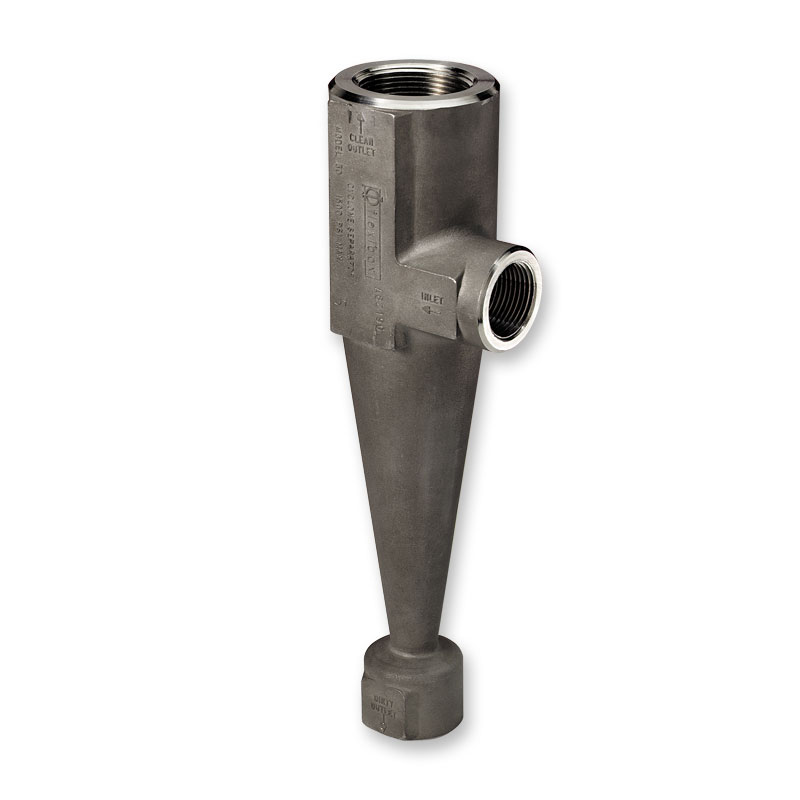Cyclone Separators

Cyclone separators are devices used in industrial processes to remove solid particles from fluids or gases using centrifugal force. They operate by causing a rotational motion, which separates substances of different densities, allowing particles to be collected and removed from the flow. This makes them valuable in protecting machinery, like pumps and mechanical seals, from abrasive wear and clogging and are typically used in API Plan 31 arrangements, integrated into the seal flush line, functioning like a modified API Plan 11.

Recommended for You
Product Information
Why Choose Cyclone Separators?
- Enhanced Seal Life: Cyclone separators significantly extend the lifespan of API Plan 31 mechanical seals by removing abrasive particles. This translates to reduced maintenance costs and increased equipment uptime.
- Improved System Efficiency: Cleaner seal flush fluids lead to smoother operation and optimized system performance.
- Cost-Effective Solution: Unlike disposable filters, cyclone separators require minimal maintenance and offer a long-term return on investment.
- Sustainability: Cyclone separators reduce seal wear and tear, reducing oil usage and minimizing environmental impact.
Applications Beyond API Plan 31:
Cyclone separators are not just for API Plan 31 applications they play a significant role in a range of industries, including:
- Chemical Processing: Extracting catalyst fines and other impurities from process streams.
- Power Generation: Isolating fly ash from boiler exhaust gases.
- Food and Beverage Industry: Filtering out unwanted particulates from liquids and slurries.
Our cyclone separators are more than just filters; they protect rotating equipment, enhance operational efficiency and support environmental sustainability.
Key Operational Guidelines
These criteria, among other nuanced checks and requirements, are essential for the cyclone separator to function efficiently on a mechanical seal:
- Specific Gravity Requirements: The particles must be at least two times greater than the fluid's specific gravity.
- Pressure Differential: Proper operation requires a minimum pressure differential across the cyclone separator of 1 bar (15 psi).
- Maximum Pressure Differential: The separator can operate effectively under a pressure differential no greater than 15 bar (220 psi). To manage higher differentials, the system may include orifices in the pipework to control the pressure effectively.
For a comprehensive review and guidance tailored to specific applications, contact one of the John Crane experts.
Features
- California Residents: PROPOSITION 65 WARNING
- One-piece pressure casing, eliminating temperature and pressure constraints imposed by designs using bolted and gasketed casing covers.
- Simple construction reduces the maintenance and inventory costs associated with more complex designs.
- Efficient, lightweight assembly provides lower pipe stress when inline mounted, while offering operating pressures up to 3000 psi(g)/207 bar(g).
Parameters
- Pressure
- 3000 psi(g)/207bar(g)
- Flow
- 33 gpm / 125 lpm
- Standard Materials
- 316 Stainless Steel
Recommended Applications
- Process pumps
- Other rotating equipment
- High abrasives content